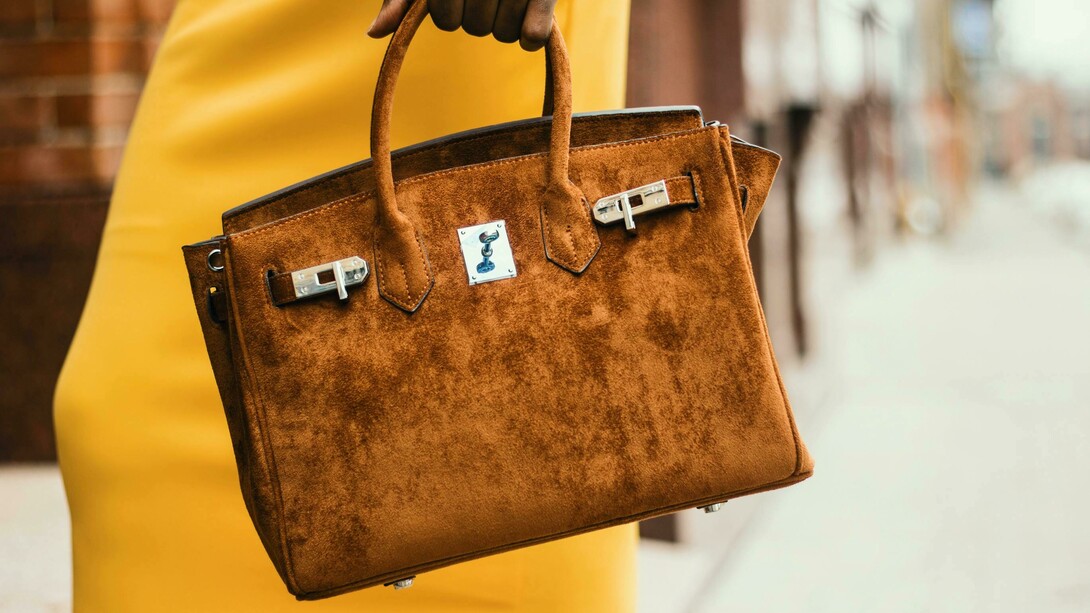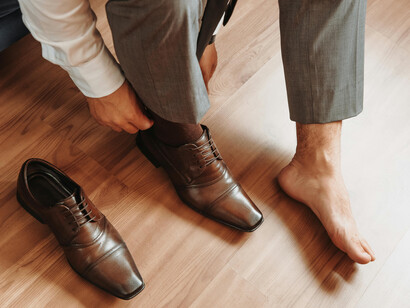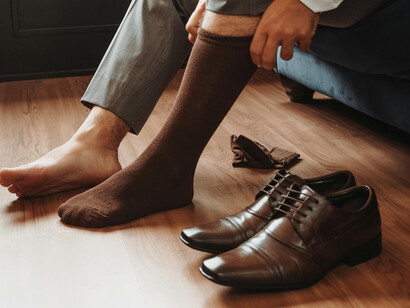Various brands, including Stella McCartney, Gucci, and GmbH, have tested leather alternatives this year with varied degrees of success. But what can be said, for instance, about brands like Hermès, Louis Vuitton, and even Harley-Davidson or Dr. Martens—brands bound by a long history of craftsmanship and/or a strong sense of heritage, tradition, or identity? Could such values ever be grown in a lab?
Leather’s place in fashion has become somewhat precarious. The industry's leather products are a major source of income for fashion and have been prized for millennia because of their versatility, durability, and cultural significance. In 2020, leather goods made up around half of the roughly $100 billion profit of Europe’s five largest luxury companies. Yet, on the other hand, leather has a hefty environmental impact—tanning uses large amounts of water and chemicals, not to mention the global emissions and reported abuse tied to animal rearing. One Danish fashion brand said last year that it would stop using virgin leather by 2023 after discovering that it was responsible for the majority of its emissions.
The solution, to date, has been—problematically—plastic. Many faux leathers are simply greenwashed, rebranded plastic, while most vegan leather alternatives still use a polyurethane coating in an attempt to match a fraction of leather’s durability. In fact, earlier this year, Portugal banned the use of the phrase “vegan leather” to describe imitation products. While demand for these alternative leather products nearly tripled last year—according to fashion search engine Lyst—to make these replacements competitive in price, performance, and durability, fossil-based materials and chemical processes are required. These procedures also have an environmental impact. A few of luxury’s biggest players, from Gucci-owner Kering and Hermès to Lululemon, have been dabbling in leather alternatives derived from mushrooms or grown in laboratories this year alone.
The pieces making their way to market now will gauge both consumer appetite and product readiness, as leading material start-ups prepare for wider commercialisation with the aim of eventually making these newly developed vegan leather items mainstream. Just how keen would consumers be to purchase “grape leather” sneakers from the likes of Pangai and Vegea? Or perhaps a “mushroom leather” bag from the latest Stella McCartney drop—or even a “kombucha leather” coat in the style of German start-up ScobyTec?
“When it comes to durability, leather alternatives today often struggle to match the quality of leather, and that can be problematic if it adversely impacts the longevity of the product,” said a representative of a British leather footwear manufacturer. “If you had to replace them every year as opposed to every ten years, their eventual influence would be much bigger even though their initial impact was lower.”
People have been wearing clothing, bags, and shoes made from animal skin for hundreds of thousands of years. Leather items are now essential to the modern luxury market because of their aesthetic appeal, durability, and associations with influential cultural figures—from rock stars to cowboys. The heritage and legacy of several of fashion’s most revered haute couture brands are deeply intertwined with their identity, particularly quality, craftsmanship, and durability. Of the current four top-selling handbags on resale site The RealReal—Louis Vuitton, Hermès, Chanel, and Gucci—the youngest is 100 years old.
Take, for instance, Louis Vuitton. Famed as one of the most recognised luxury brands in the world, the fashion house is synonymous with high-end leather goods, including legendary steamer trunks, iconic monogram handbags, and cutting-edge fashion. Hermès, the French luxury goods manufacturer, is likewise known for its rich heritage, exquisite craftsmanship, eye for detail, and high levels of quality and professionalism through its entire manufacturing process. For both brands, the leather goods category is the biggest contributor to revenue, amounting to almost 50% of profits.
The bag that could be referred to as Gen-Z’s ‘it bag’ was accessibly priced, unisex, and made of vegan leather: the "Bushwick Birkin," created by a Liberian-American designer. It was positioned as a sort of riposte to the pricey European leather products that had previously dominated the luxury market. Therefore, the internet had many thoughts when a vegan choreographer and influencer released a video on Twitter demonstrating how the faux leather on his beloved tote had worn away after four years of use.
To succeed, vegan products need to be as good as leather so “people won’t even see any compromise on […] the touch or the feel or the wearability,” said the designer of a luxury vegan fashion brand in a recent interview, referring to the release of her brand’s highly anticipated mushroom leather bag. “Everybody wants to make it work. But until it works, they’re not going to take a leap of faith. Because they’ve got something that currently works very well for them.”
“Genuine leather can last thousands of years with the correct care—this is what we make sure to emphasise with our products,” said a representative of the same British footwear factory. Alternatives made of plants or plastic, which have significantly shorter lifespans, cannot be said to be the same. The lifespan of genuine leather is why it remains so ubiquitous in fashion. With the correct care, a leather product can outlive its owner. Timeless designs can survive generations.
‘Pleather’ products aren’t entirely without merit. “Sustainability is not even defined clearly by the industry, nor is there a standard way to measure it,” said a representative of a platform championing techstyle and agriculture-based sustainability. The platform has run several programmes with fashion students and corporations alike, which have helped prove how synthetic materials can be used for good. “Leather ages poorly and degrades under UV light, while synthetic counterparts do not absorb liquids and are easier to maintain. [Faux leather] is also factory-made to exact standards, so if precision and uniformity are important to you, then this is a plus.”
“For us, it’s all about reclaiming the craft behind leather—good quality, ethically reared and produced leather,” said a co-founder of an industry-certified leather trade house. “We live in the age of the conscious consumer. Therefore, it’s imperative that we have conscious suppliers. There are so many questions to factor in when asking whether or not a material is sustainable. How’s your cotton grown: is it rain-fed, or is it irrigated with groundwater? How strict are the laws regarding the production of synthetic materials made from petroleum in the country in which they are being made?”
Considering all these variables, consumers may find it challenging to decide whether natural or synthetic materials are more environmentally friendly. Most leather is a by-product of the process of harvesting meat from animals for human and animal consumption. And, while genuine leather is strong and durable, it must be adequately cared for to extend its life. There is an obvious disadvantage to buying real leather, which is that you are contributing to the death of animals for fashion. You're wearing an animal, and depending on your personal ethics, some would argue that that sends a message.
Nowadays, change is being fuelled by a shift in customer preferences toward goods that adhere to higher environmental and ethical standards. Other once-highly-valued fabrics, like fur and exotic skins, have already fallen from favour among some of luxury’s biggest players.
A broader definition of "luxury" that takes into account accessibility, casualisation, and sustainability is now required of the industry. It seems the simplest approach for consumers who wish to be sustainable is to buy better and less.















